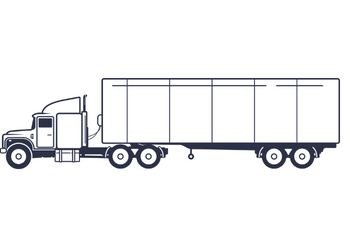
Heavy Duty Truck Repair and Maintenance: Your Go-To Source for Fleet Service
Importance of Proper Heavy Duty Truck Maintenance
Maintaining heavy-duty trucks is critical for ensuring the vitality of industries worldwide. These colossal vehicles form the backbone of logistics, ensuring goods reach their destinations seamlessly.Regular upkeep not only prolongs their lifespan but also ensures they operate at peak efficiency, saving businesses time and money in the long run.

Interested in Heavy duty Truck Repair/ Maintenance near Grand rapids, mi?
We can help!
Unique Aspects of Heavy DUty Truck Repair
What sets heavy-duty truck repair apart is the sheer magnitude and complexity of these mechanical beasts. These giants of the road demand specialized expertise and equipment that go beyond what’s typically required for standard vehicles.
From the intricacies of their engines to the robustness of their suspension systems, heavy trucks present a unique set of challenges for repair technicians.
Moreover, their substantial load-bearing capacities mean that wear and tear occur at an accelerated rate, necessitating a thorough understanding of the specific components that withstand this formidable task. This distinctiveness in repair work underscores the critical need for seasoned professionals who can navigate these intricacies with precision and skill.

Specialized Services for Heavy Trucks
Semi Truck Repair
Heavy-duty trucks are subjected to intense wear and tear, often encountering challenges that set them apart from light duty trucks. Our specialized technicians can address issues from engine diagnostics to transmissions and electrical issues. Preventing small problems from escalating into major headaches will also ensure that these trucks remain reliable and roadworthy.
Mobile Repair for Heavy Trucks
Mobile repair not only minimizes downtime, a crucial factor for any business reliant on its fleet, but also eliminates transporting a mammoth truck to a repair shop. This on-site approach blends efficiency with convenience, and keeps your fleet moving.
Check out more information on our ASE-certified Mobile Truck Mechanics.
Semi Truck Trailer Repair
The relationship between a heavy truck and its trailer is symbiotic. Trailer maintenance encompasses a range of considerations, from brakes and suspension systems to lighting and structural integrity. A well-maintained trailer will ensure safe hauling and long-term performance.
Heavy duty Truck Tire Repair and Maintenance
Signs of Tire wear
Tread Depth: Insufficient tread depth is a clear sign of tire wear. Measure the tread depth using a tire gauge. If it’s approaching the minimum legal tread depth (usually 4/32 inch or 2/32 inch depending on regulations), it’s time for replacement.
Uneven Tread Wear: Irregular wear patterns can indicate alignment or suspension issues. Look for uneven wear across the tire’s surface, such as scalloping, cupping, or one-sided wear. Addressing these issues promptly can prevent further tire damage.
Exposed Steel Belts: If you see steel belts or cords protruding through the tire’s tread, it’s a severe sign of wear and indicates the need for immediate replacement.
Cracks, Cuts, or Bulges: Inspect the tire sidewalls for any cracks, cuts, or bulges. These can weaken the tire’s structure and increase the risk of a blowout. If you spot any damage, replace the tire.
Vibration or Handling Issues: If you experience unusual vibrations while driving or notice changes in the truck’s handling, it may be due to tire wear or imbalances. These symptoms can result from unevenly worn tires or issues with tire balance.
Proactive measures for tire health
Proper Inflation: Maintaining the correct tire pressure is crucial. Check tire pressure regularly, ideally before each trip, and adjust it to the manufacturer’s recommended levels. Proper inflation ensures even wear and reduces the risk of blowouts.
Regular Inspections: Routinely inspect your tires for signs of wear, damage, or irregularities. Look for issues like uneven tread wear, cuts, bulges, and exposed steel belts. Promptly address any problems to prevent further damage.
Alignment and Balancing: Ensure your truck’s wheels are properly aligned and balanced. Misalignment can cause uneven tire wear, reducing tire lifespan. Regularly schedule wheel alignments and balancing to keep the tires in optimal condition.
Rotation: Regular tire rotation helps distribute wear more evenly among all the tires. Follow a recommended rotation schedule, typically every 6,000 to 8,000 miles or as advised by the tire manufacturer. This practice maximizes the life of all your tires.
Proper Load Management: Overloading or underloading heavy-duty trucks can lead to premature tire wear. Always adhere to weight limits and distribute loads evenly to prevent excessive strain on specific tires. Use load scales when necessary to ensure compliance.
DOT Inspection Services
Staying Compliant
The Department of Transportation (DOT) standards exist to protect drivers, fleets and the public. It’s not just about following rules; it’s about prioritizing safety and efficiency on the road. From vehicle weight limits to proper lighting and braking systems, DOT standards are the roadmap to a secure and reliable operation.
Preparing for Inspections
Preparation is the name of the game. From checking brakes, tires, and lights to ensuring all paperwork is in order, we can help you with this meticulous process. Ensuring that every aspect of the vehicle is up to code and that all required documentation is readily available helps streamline the inspection process.
Regular Maintenance Makes Passing Easier
Routine check-ups are a proactive approach, ensuring that everything from brakes to lights is in top-notch condition. When a truck has been well cared for, it speaks volumes during an inspection, making the process smoother. It’s not just about passing the test; it’s about cruising through it with flying colors.
Preventative maintenance for heavy duty Trucks

Importance of a Scheduled Maintenance Program
Having a scheduled maintenance program for your fleet is like giving your vehicles a passport to a long and healthy life on the road. It’s not just about fixing things when they break, but about proactive care that keeps everything running smoothly. Regular check-ups catch potential issues before they escalate, reducing the chances of unexpected breakdowns and costly repairs. With a well-structured maintenance plan, you’re not just extending the life of your fleet, but also enhancing its performance and reliability, making it a trusted asset for your business.
Heavy Duty Truck Checklist
Tire Pressure and Condition: Ensure that all tires, including the spare, are properly inflated and free from cuts, bulges, or any signs of damage.
Brake System: Check for any signs of brake fluid leakage, and make sure the brake pads, drums, and rotors are in good condition.
Fluid Levels: Verify that engine oil, coolant, transmission fluid, power steering fluid, and brake fluid are at the correct levels.
Lights and Signals: Test all exterior lights, including headlights, brake lights, turn signals, and hazard lights, to ensure they’re working properly.
Mirrors and Windshield: Adjust and clean all mirrors for optimal visibility. Inspect the windshield for any cracks or chips that could impair vision.
Horn: Test the horn to ensure it’s functioning correctly.
Emergency Equipment: Verify that all emergency equipment, such as reflective triangles, flares, and fire extinguishers, are present and in good condition.
- Battery and Electrical System: Check the battery terminals for corrosion and ensure all electrical systems, including gauges, are functioning properly.
Exhaust System: Inspect the exhaust system for any signs of leaks, loose brackets, or damage.
Suspension and Steering: Look for any visible damage or leaks in the suspension system, and ensure that the steering is responsive and free from excessive play.
Belts and Hoses: Inspect belts for wear, cracks, or fraying, and check hoses for any signs of leaks or damage.
Air Compressor: If applicable, check the air compressor for proper operation and ensure it’s building and maintaining air pressure.
Cargo Securement: If your truck is loaded, double-check that the cargo is properly secured and distributed for safe transport.
Documentation and Paperwork: Ensure you have all necessary documents, including your driver’s license, registration, insurance, and any required permits or load documentation.
Conclusion
Taking a proactive approach to heavy duty truck maintenance is a cornerstone of ensuring safety, reliability, and cost-effectiveness in the transportation industry. Regular checks, both before and after trips, play a vital role in catching potential issues early on. This helps prevent breakdowns, ensures compliance with safety standards, and extends the lifespan of the vehicle. Recognizing the signs that professional repairs are needed is equally crucial, as it prevents minor issues from snowballing into major problems. Overall, a well-maintained fleet not only keeps operations running smoothly but also contributes to long-term cost savings.
Take a minute to learn more about our company and the services we provide!
